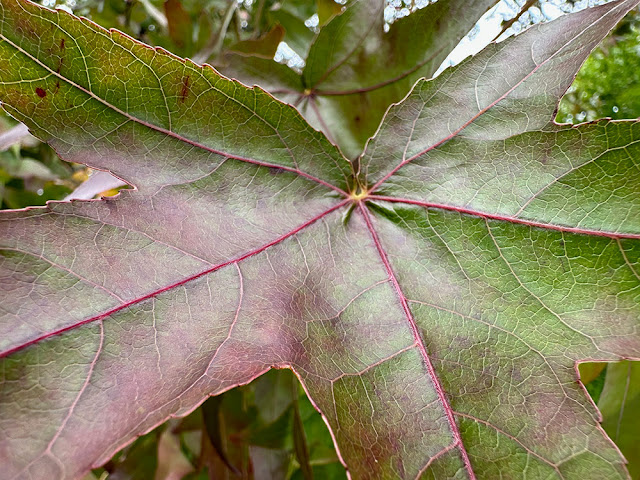Best camera phones for photography in 2023
Love taking photos on your phone? Photographers are absolutely spoiled for choice when it comes to great camera phones for smartphone photography. The multi-module camera arrays on flagship smartphones have evolved to the point where they are credible professional tools in their own right, for both videographers and photographers.
There’s a reason that compact cameras are no longer as popular as they used to be. Smartphones have taken over as the new ‘take-everywhere’ camera. And as stated above, there are some great options out there.
Since photography is our bread and butter, we review all the major smartphones with every bit as much care and attention as we do mirrorless cameras and DSLRs. We assess the phones on how the cameras perform, including what they are trying to achieve with their camera setup, and importantly how good is the image quality?
So, using the data we’ve gathered in our reviewing process, we’ve compiled this guide to the best camera phones you can buy for smartphone photography.
How to choose the best camera phone?
Sensors and image quality
Comparing the headline specs of camera phones can be a useful way of getting a sense of how they perform, and which ones might be better than others. Digital photography enthusiasts may gravitate towards comparing camera resolution (megapixels or MP for short), however this often doesn’t tell the whole story.
Smartphone cameras use very small sensors, due to their physical size and shape, and this can mean a lot of image noise in high-resolution shooting. If a camera phone has a high megapixel count, it also needs a capable image processing system to ensure it’s capable of producing pleasing images.
When we talk about a smartphone’s main camera (i.e. the rear camera), we’re really talking about more than one, as modern smartphones use a camera array made up of multiple modules. This is what allows smartphones to shoot at different perspectives; generally there will be a standard wide lens, an ultra-wide-angle lens, and then sometimes a telephoto lens or a macro-lens for close-ups.
The different lenses use their own sensors, and as such will tend to have different megapixel counts. Some of the latest smartphones even use quad camera arrays with four modules, while other manufacturers are experimenting with optical zoom lenses, though this tech is in its early days.
Battery life and video
You’ll also want to consider battery life, as some phones are much better at lasting the day than others. If you’re shooting video, this is particularly important, as it tends to eat away at a phone’s battery faster.
The top video resolution will be of interest, as you’ll likely want at least the option to shoot 4K. You’ll also want advanced lens options and good audio recording capabilities.
iOS vs Android
One big thing to think about is whether you want to use a phone that runs iOS or Android as its operating system. Both systems have their own advantages and disadvantages when it comes to smartphone photography, as well as general use as a smartphone.
If you already use a lot of Apple products like MacBooks then an iPhone will integrate better into your system. However, Android phones offer a lot more choice and flexibility with third-party apps. These days, Android phones from market leaders like Google and Samsung have some of the best cameras in the business.
Below we’ve included a great assortment of phones, from brand-new flagships to older phones that you can buy used or refurbished.
Let’s get stuck into the best camera phones you can buy and don’t forget to download one of the best editing apps for smartphones.
- Best Samsung camera phone: Samsung Galaxy S23 Ultra: check best price
- Best Apple camera phone: Apple iPhone 14 Pro: check best price
- Best Google camera phone: Google Pixel 7 Pro: check best price
- Apple iPhone 13 Pro: check best price
- Best camera phone for under $600 / £600: Google Pixel 7: check best price
- Google Pixel 6: check best price
- Best looking camera phone: OPPO Find X5 Pro: check best price
- Best cheap camera phone: Google Pixel 6A: check best price
- Best second hand Samsung camera phone: Samsung Galaxy S22 Ultra 5G: check best price
- Best second hand iPhone for photos: Apple iPhone 12 Pro: check best price
- Best camera phone with stylus: Samsung Galaxy Note20 Ultra (2020): check best price
- Honor Magic4 Pro: check best price
Spot Outs
- 200MP wide camera, 1/1.3” sensor, f/1.7 aperture
- 12MP ultra wide camera, 1/2.55” sensor, f/2.2 aperture
- 10MP telephoto camera, 1/3.52” sensor, f/2.4 aperture
- 10MP telephoto camera, 1/3.52” sensor, f/4.9 aperture
- 8K video 30fps, 4K video 60fps
- Price: $1,683 / £1,399
Before getting too excited, remember that images are not output at 200MP by default, although it is possible to shoot in super high resolution mode if you really want to. Rather, the new phone makes use of pixel-binning technology so the images come in at a more practical 12.5 megapixels, with enhanced lighting and detail.
The main camera features a f/1.7 stabilised lens, backed up by a 12MP ultra wide f/2.2 combination. Then there are two telephoto lenses, both with 10 megapixel sensors. One has 3x zoom and an f/2.4 lens, while the other offers a a 10x zoom with an f/4.9 aperture. Digital zoom goes as far as 30x or 100x if you need it (though as with the phone’s predecessor, digital zoom should only be used as a last resort). So the S23 Ultra has jumped ahead of the iPhone 14 Pro and the Google Pixel 7 Pro, which only have three lenses.
In our review, we said: ‘last year’s Samsung Galaxy S22 Ultra was so good, that we knew that the company would have to go some way to topping it. The good news is that it has done it – but the not so good news is that you have to really examine the pictures to see the difference.
If therefore, you’re thinking an upgrade will be a huge boost to your photography, you might be left a little disappointed… Images directly from the Samsung Galaxy S23 Ultra’s main (200MP) sensor show more detail than last year’s S22 Ultra main (108MP) sensor. But, that’s really only obvious if you’re comparing like-for-like images shot at the same time and you zoom in closely.’
If you’d like one of the newest Samsung phones, but don’t want to spend top dollar, then the Samsung Galaxy S23 offers a compelling option, but with three rear cameras, it is considerably cheaper.
Pros:
Fantastic all-rounder with superb image quality
Four lenses
8K video
Pro shooting mode and RAW format
Cons:
Expensive
Resolution jump can be hard to spot in practice
Space Zoom not actually that useable
10x telephoto lens a bit smudgy
Best Apple camera phone: Apple iPhone 14 Pro
Spot Outs:
- Quad-camera setup
- 3x and 2x telephoto cameras
- iOS operating system
- Two sizes: Pro and Pro Max
- Price: from $999 / £1,099
The iPhone 14 Pro is a commendable – if somewhat iterative – upgrade to Apple’s flagship smartphone. If you want the best Apple smartphone for photographers, this is definitely it.
With a new 48MP sensor as part of its camera array, the iPhone 14 Pro reliably produces excellent images, and specialist modes like Macro and Portrait help out the user in various different shooting situations. It’s already a pricey phone, though if you have the budget you can go for the larger iPhone 14 Pro Max. This model has an identical camera array, just a larger display.
In our review, we said: “There is a lot to like about the iPhone 14 Pro, and it undeniably produces some excellent imagery. It’s fair to say that it’s the best iPhone yet for photographers – but that’s pretty much something we say every time a new one is released.
“As good as it is, it’s not overwhelmingly exciting, and if you’ve already got an iPhone 13 Pro, there’s not a huge amount here to warrant an upgrade. If you’ve got a 12 Pro or older, it’ll be more of a leap and therefore more worthy of the outlay.”
Pros:
Very good Night mode
New 48MP sensor delivers flexibility
4K 60p video
Easy to use
Cons:
Not quite as versatile as S22 Pro
Not a huge jump from 13 Pro
Relatively expensive
Best Google camera phone: Google Pixel 7 Pro
Spot Outs:
Triple camera setup
14mm, 24mm, 117mm equivalent
Android operating system
30x Super Res Zoom
Cinematic movie modes
Price: $879 / £849
A premium camera phone experience at a price that undercuts the likes of Samsung and Apple, the Google Pixel 7 Pro is an immediately tempting prospect. Its triple camera array delivers impressive images at a range of perspectives, and it brings into the mix a macro mode, a faster night mode and additional telephoto reach.
The selfie camera acquits itself well even in poor light, and the ability to add pronounced background blur to your videos expands the phone’s utility as a video tool. While we might expect the price of the Pixel 7 Pro to come down in the near future (as the Pixel 6 did), even at the full whack, it’s tremendous value for money.
We said in our review: “The computational photography on offer is amongst the best, with some really useful photographic features, including motion blur, astrophotography, and for portraits real tone.”
“There is of course the issue of some images looking like they’ve had the HDR settings turned up to the max, and there is no way to avoid this without shooting raw, but if you can get used to this, then you’ll be very pleased with the images this smartphone produces.”
Pros:
Excellent telephoto reach
Strong macro performance
Video looks great
Terrific value for money
Cons:
No manual settings-control mode
HDR imposes itself unless you shoot RAW
Fixed-focus selfie camera (iPhone 14’s has AF)
Best Xiaomi camera phone: Xiaomi 13 Pro
Spot Outs:
Triple 50MP camera system and Leica lenses
14mm, 23mm, 75mm equivalent
Android 13 operating system
8K video
Price: $1299 / £1099
There’s an awful lot to like about the Xiaomi 13 Pro. It’s packed with a good range of features, including a one-inch main sensor, which puts it ahead of most rivals. Unlike with most smartphones, you can shoot using all three lenses in 50MP mode. Video performs pretty well and it has a slew of options including slow motion (up to 1920fps), night video, video pro mode and a tracking mode.
While the Xiaomi 13 Pro might not be exactly cheap, it fares well when compared to competing flagship models and is probably also likely to drop in price more quickly, and on the second-hand market, compared with the likes of the bigger name (at least in certain markets) Samsung and Apple phones, so the gap between prices is likely to become even wider.
We said in our review: “While it doesn’t quite steal the crown from the Samsung Galaxy S23 Ultra, it’s an extremely capable smartphone which produces excellent results in a wide variety of different shooting scenarios.”
Pros:
Large sensor
Three lenses
Raw shooting and pro mode
Quick charging
Cons:
High price
Oversaturated images in some circumstances
Strange portrait mode.






Comments
Post a Comment